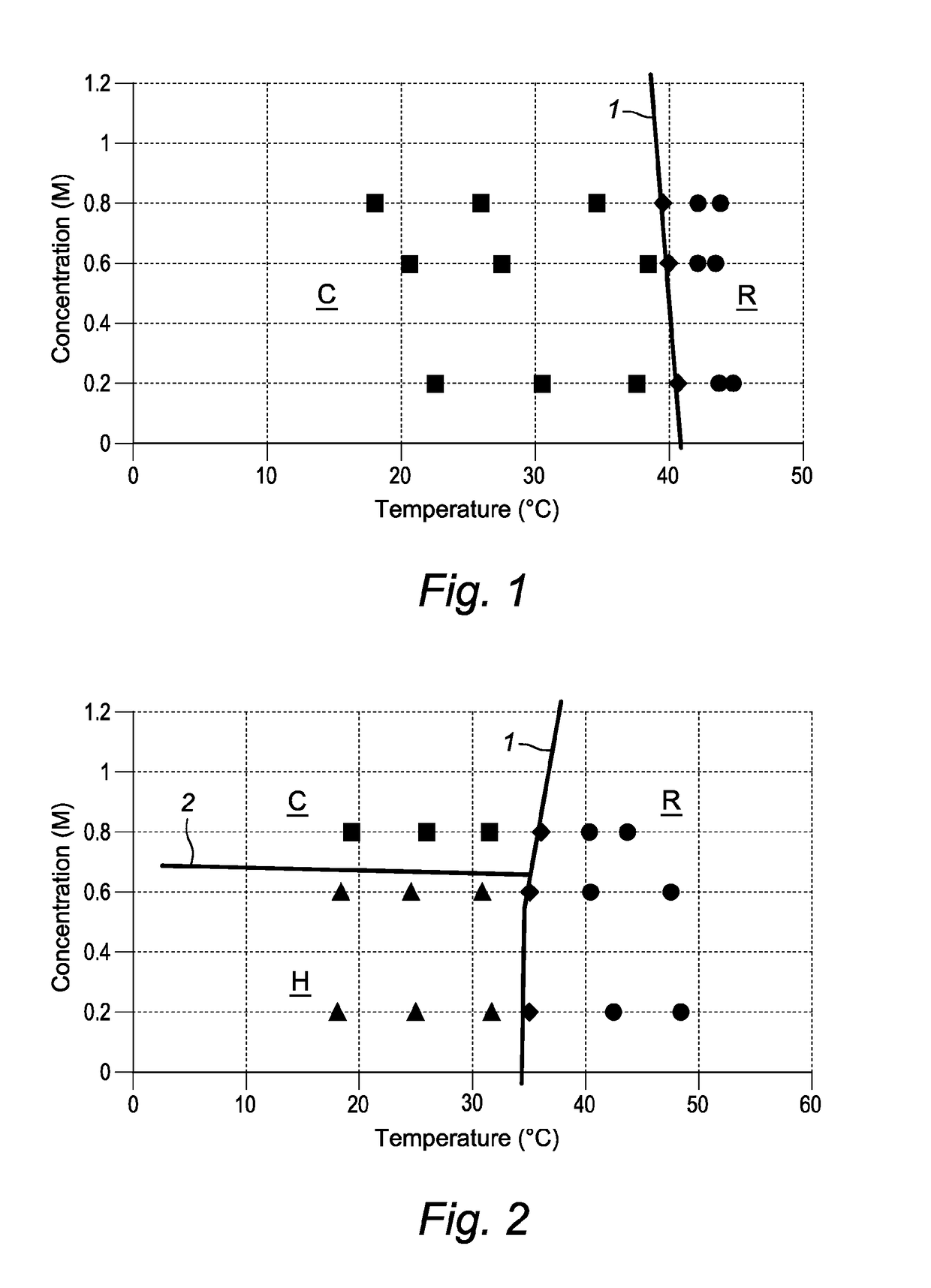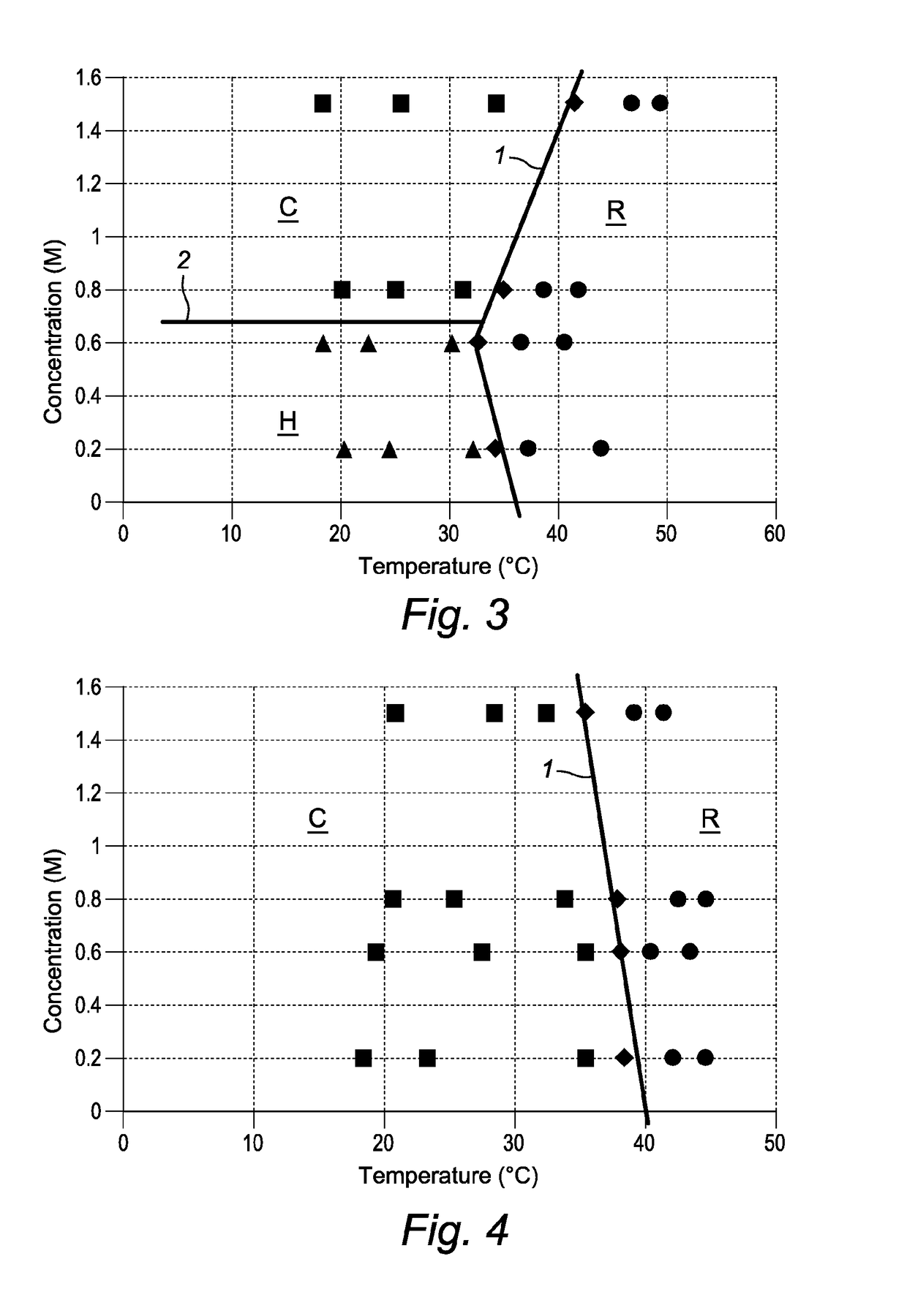Controlled sausage manufacturing process
a technology of coextruding and elongation, which is applied in the manufacture of sausage casings, butchering, cream preparation, etc., can solve the problems of difficult prediction of the change in the characteristics of the casing material, the inability to process coextruding elongated food products, and the inability to produce coextruding elongated products. , to achieve the effect of controlling the smooth surface of the casing
- Summary
- Abstract
- Description
- Claims
- Application Information
AI Technical Summary
Benefits of technology
Problems solved by technology
Method used
Image
Examples
examples
[0019]Collagen gels were prepared. The viscosity of the collagen gels was measured by using rotary viscometers, e.g. bob-in-cup and parallel plates, wherein the pH of the gels and the salt concentration of the salt present in the collagen gel, i.e. sodium chloride, was varied. The pH, temperature and concentration of salt, were varied and the starting point of the decrease in viscosity, i.e. the melting point of the collagen gel, was measured. Based on the different melting points, the phase change of the collagen gel was identified.
[0020]The results of the above rheology analyses are shown in FIGS. 1-4. FIG. 1 shows the rheology analyses of a strong acid based collagen gel and sodium chloride at a pH of 6.5-7.5. FIG. 2 shows the results of a strong acid based collagen gel and sodium chloride at a pH of 2.7-2.9. Weak acid based collagen gels and sodium chloride at different pH are shown in FIG. 3 (pH of about 3.3) and FIG. 4 (pH of about 6.6).
[0021]The different phases of the collag...
PUM
 Login to View More
Login to View More Abstract
Description
Claims
Application Information
 Login to View More
Login to View More - R&D
- Intellectual Property
- Life Sciences
- Materials
- Tech Scout
- Unparalleled Data Quality
- Higher Quality Content
- 60% Fewer Hallucinations
Browse by: Latest US Patents, China's latest patents, Technical Efficacy Thesaurus, Application Domain, Technology Topic, Popular Technical Reports.
© 2025 PatSnap. All rights reserved.Legal|Privacy policy|Modern Slavery Act Transparency Statement|Sitemap|About US| Contact US: help@patsnap.com


